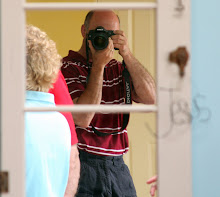Well, here it is again, almost another month since my last post. But today I mailed out two cd's containing over 200 images which were taken at my family reunion last July. Much of my spare time was spent making minor adjustments and some cropping. As I understand, they will be used for a slide show at this years reunion. Hence the need to only spend time working on them and nothing else. However, I haven't stopped shooting during this last month. Besides the usual Amish/Menonite pictures, landscapes, flowers, birds, I've taken a fair amount of shots at the Heritage Days in Carlisle, Shakespeare in the Park in Harrisburg, Arts Fest in Harrisburg, Zoo America and the Park at Hershey, Founders Day in Boiling Springs and I'm sure I'm leaving something out. Maybe some of them will find there way on here in the future, maybe.
Recently I had a discussion with a certified diver, that has yet to do a night dive and she seemed leary of attempting one. Then I began explaining the unique experience which I will share with you as well. Just as we have animals that are nocturnal, so it is with the sea. Other than in pictures , the only way you would be able to see these creatures is to do a night dive.
One of the examples I used to explain the difference in behaviors from day to night, was a Basket Star. Looking at the top center of the posted picture, you will see a jumbled mess in a ball shape. This is generally what you would see during the day. You may see them affixed to a sea fan or some soft corals with a nearly choke hold on its host. Now look below that jumble in the picture to the opened Basket Star which has extended its arms out in the current in order to feed. I have seen them in a variety of colors and size.

Basket Star
Another example is the Orange Cup corals. During the day, they have the appearance of cut off thumbs, short and stubby. But the inward tucked tenacles unfold and extend themselves up and out in to the currents as you can see from the pictures previously posted in March. "The Wall at Rappel" that was posted on 3/28, depicts the Orange Cups during the day. The earlier post on 3/21 shows them extended and feeding. These are just a couple of simple examples among many that make night diving so interesting. Also dives during the transitions, from day to night and night to day, are are also something to see. During these times, you see the most activity. The fish from the day are hiding themselves in the crevices from those that are waking up and heading out to hunt. Also, the other behaviors that can be seen are the pairing of fish for courting. The morning transition isn't as dramatic, but is still interesting, that's just my opinion. Maybe that's because in doing a before breakfast dawn dive, I'm still waking up!




 Basket Star
Basket Star 
